The experts in boutique travel To Peru and South America
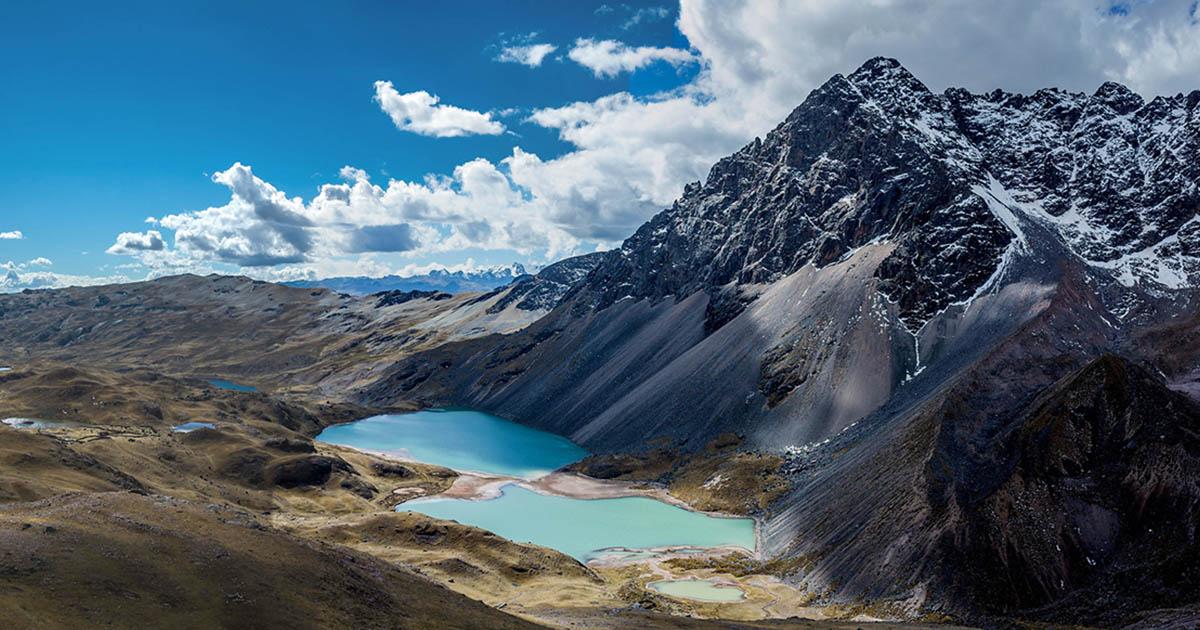
Peru is famous for being home to many exhilarating treks. Though not as popular as some of the other trails accessible from Cusco, the Ausangate trek is just as worthwhile. In fact, being less crowded with tourists is part of its charm. It guarantees travelers who venture on this remote journey a more unique experience. While you won’t come across Incan ruins, it makes up for it with breathtaking natural scenery and spiritual significance. Spot spectacular snow-capped peaks, gorgeous lakes, and wonderful wildlife, including herds of llamas and alpacas. The centerpiece of the trek is the mighty Apu Ausangate, one of the tallest mountains in Peru.
*Cover photo by Serge, used under CC BY 2.0
Before embarking on the Ausangate trek, it is important to know what to expect. This will help you decide whether this trek is best suited for you. Firstly, it’s useful to compare Ausangate to other trekking options in the Cusco area. Ausangate does not conclude at Machu Picchu, making it less crowded compared to other treks. This means it is ideal for travelers looking to get off the beaten path.
Most tour companies recommend at least 5 days for the trek, or 6 if visiting Rainbow Mountain. The average elevation during the hike is 13,000 feet (4,000 m). Thus, it’s important to give yourself sufficient time to complete the trek. Taking some time to rest will decrease your chances of getting altitude sickness. Because of these challenges, previous experience hiking at altitude is recommended.
The Ausangate trek doesn’t end at Machu Picchu. If you want to combine a trek with a visit to the ancient citadel, consider one of the treks to Machu Picchu. The most popular are the Inca Trail, Salkantay, and Lares treks. That being said, there are several other reasons visitors choose to hike the Ausangate trek. Especially those who have already seen Peru’s World Wonder, or travelers aiming to avoid the large crowds.
Trekking Tours:
The recommended length of this trek is 5 days. This gives you enough time to relax and enjoy the beautiful scenery. It also accounts for time to rest, in case you are suffering from symptoms of altitude sickness. Adding a visit to the Rainbow Mountain will require an extra day, making it a total of 6 days. If you are short on time, some tour companies organize a 4-day Ausangate + Rainbow Mountain trek. This shortened trail takes you back to Cusco after visiting the Rainbow Mountain.
Ausangate is considered to be a hard trek. It is important to consider the challenges carefully before embarking on your trip.
While the hike itself is comparable to other Andean treks, the average altitude is over 13,000 feet (4000 m) above sea level. Lower oxygen levels at this elevation can trigger altitude sickness and shortness of breath. There are a total of four steep passes to cross measuring up to 17,000 ft (5,182 m). Previous experience hiking at high altitude is highly recommended.
Located in a very remote area, it can be difficult to navigate the trail. To avoid getting lost, hiking with a professional guide is suggested for all but the most seasoned adventurers.
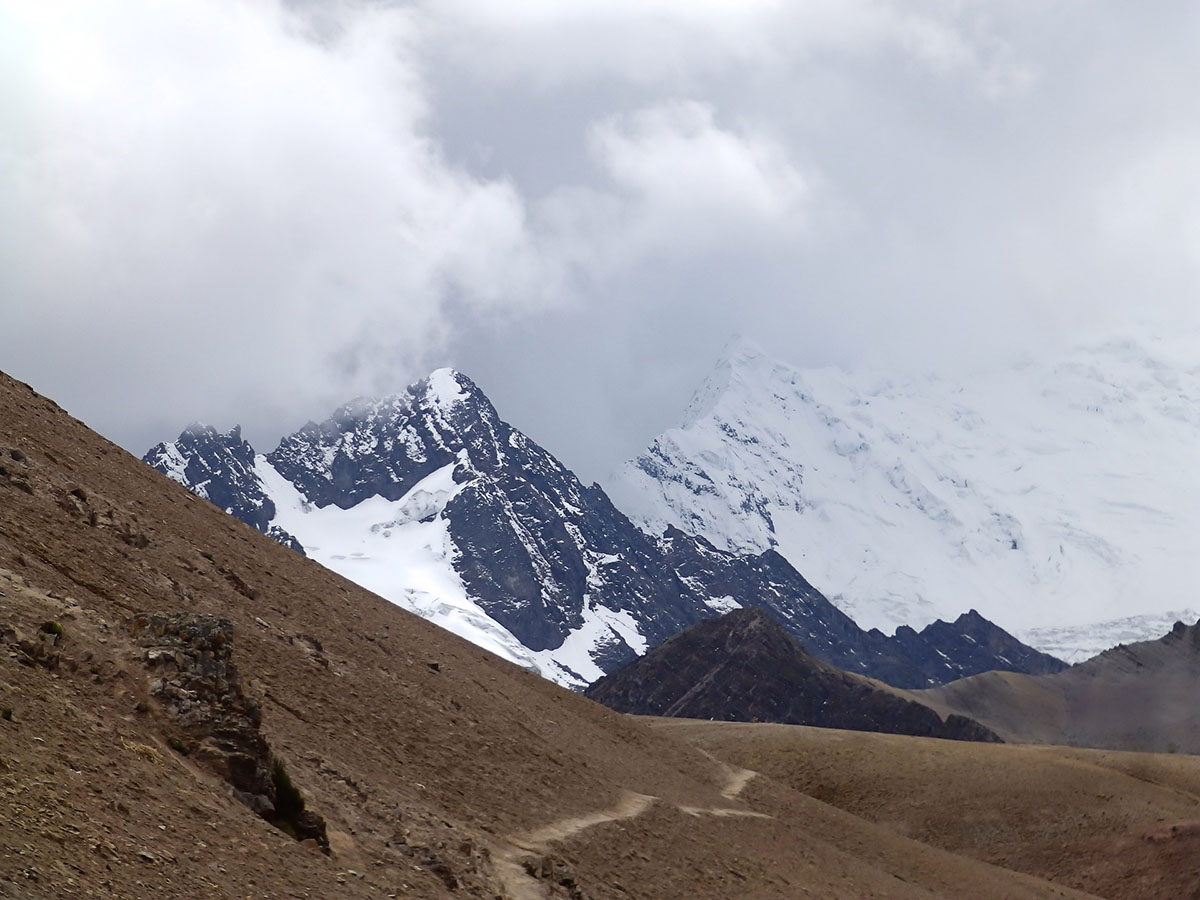
The Ausangate trek is different to other treks, mostly because it does not offer a visit to Machu Picchu. Nor does it visit other Incan ruins. Instead, its highlights are natural attractions, including glaciers, colorful lakes, and precious wildlife. Being so close to Rainbow Mountain, it even offers trekkers a chance to visit this popular attraction. In addition, you will encounter remote Andean villages that still retain their traditions. Read more below about the highlights of hiking the Ausangate trek.
For the Incas, mountains served as a connection between the middle and the upper worlds. Important mountains were called “Apus“, named after protective spirits they believed to live inside them. Apu Ausangate is the tallest peak of the Vilcanota Mountain Range in the Cusco region. It is also the fifth tallest mountain in Peru, measuring 20,940 ft (6,384 m). Though the trek does not take you to the top, you will get unrivaled views of its majestic, snowy peak.
Apu Ausangate’s nickname is “Creator of the Waters” because of its many glaciers. They are the source of several lakes and rivers that supply water to other parts of the country. For example, the Vilcanota River goes on to feed the famous Amazon River. Thus, Ausangate has a special significance for Peruvians to this day. On the trek, you will come across gorgeous lakes, each of which with its own unique color. The colors range from green to blue, turquoise, and even red.
One of the biggest attractions of Ausangate Trek is a chance to visit the famous Rainbow Mountain. Mineral rock sediments found in the sandstone give this mountain its iconic colors. While not on the trail itself, a visit can be easily arranged on a one-day detour. See the day-by-day itinerary below for more details on how to incorporate it into your trek.
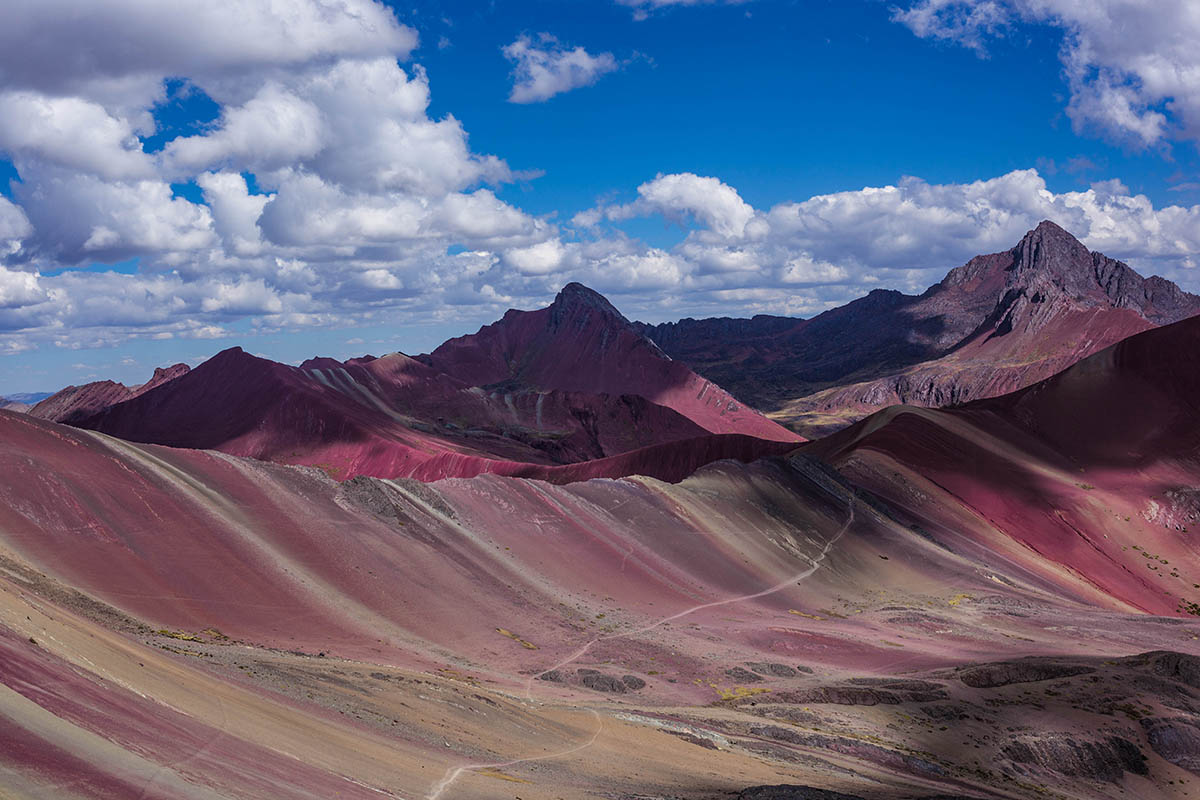
The Ausangate trek passes through remote areas untouched by mass tourism. This has preserved it as a habitat for many wildlife species found in Andean Mountains. Come face to face with llamas, alpacas, vicuñas, and vizcachas (South American rabbit-like rodents). There are also various types of birds, such as Andean condors, black-chested buzzard eagles, and hummingbirds.
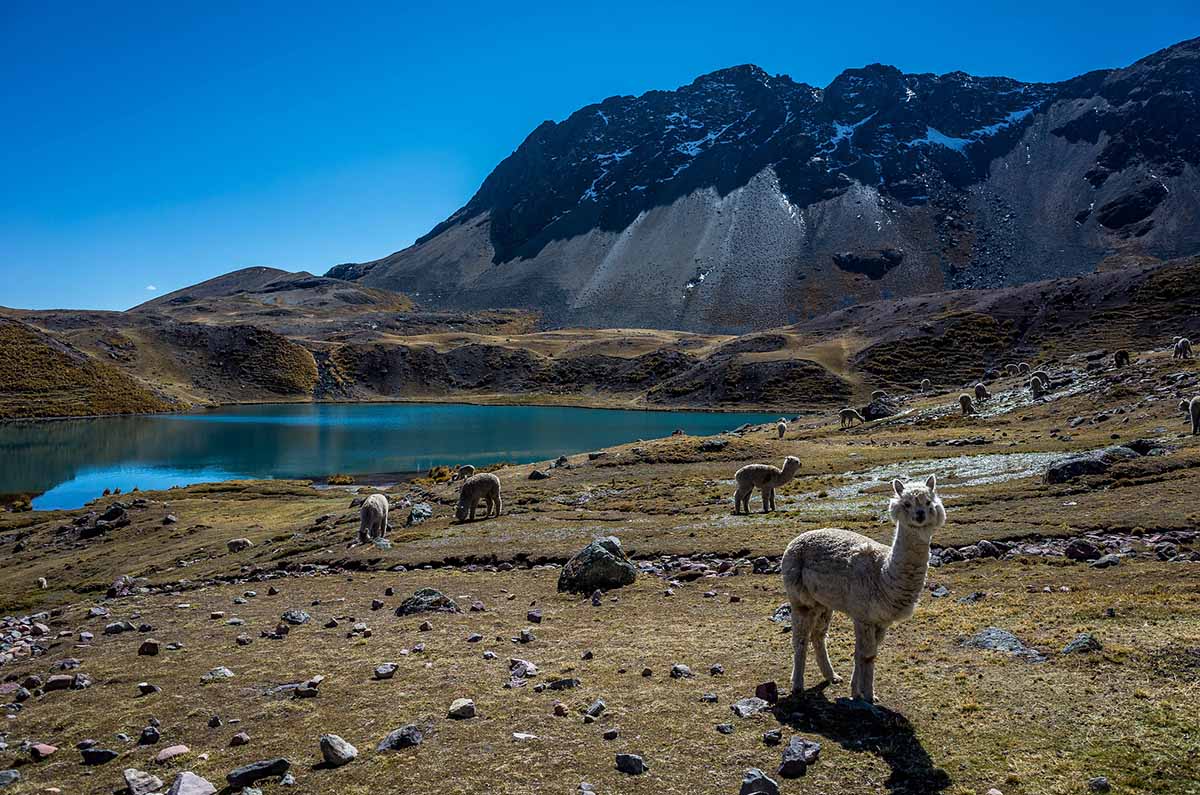
Several Andean villages are dotted across the trail of the Ausangate trek. These remote Andean communities still retain their rich culture and traditions. Once a year, 10,000 pilgrims gather to celebrate Qoyllur Rit’i, the festival of the “Snow Star”. Several pilgrims climb Apu Ausangate searching for the legendary snow star. At the base of the mountain people celebrate with traditional dances. This event takes place over four days at the end of May or early June, coinciding with the full moon. Visitors who travel at this time are welcome to join the festivities.
Many hikers enquire whether it’s possible to do the trek on their own, or whether they need to go with a guide. In theory, it is possible to complete the trek without a guide. However, due to the high altitude it is only recommended for those with advanced hiking experience. While it may be more expensive, hiking with a guide will make the experience much more enjoyable. Especially for travelers who do not consider themselves professional hikers. See below for a full comparison of the advantages of hiring a guide vs. hiking solo.
Part of the Andes Mountains chain, the Ausangate trek runs at a very high altitude. Elevations range between 10,334 and 16,800 ft (3,150 to 5,120 m), contributing to the trek’s difficulty. The giant, snow-capped mountains and glaciers are the source of rivers and lakes. These bodies of water have formed lush valleys and limestone forests below the mountains.
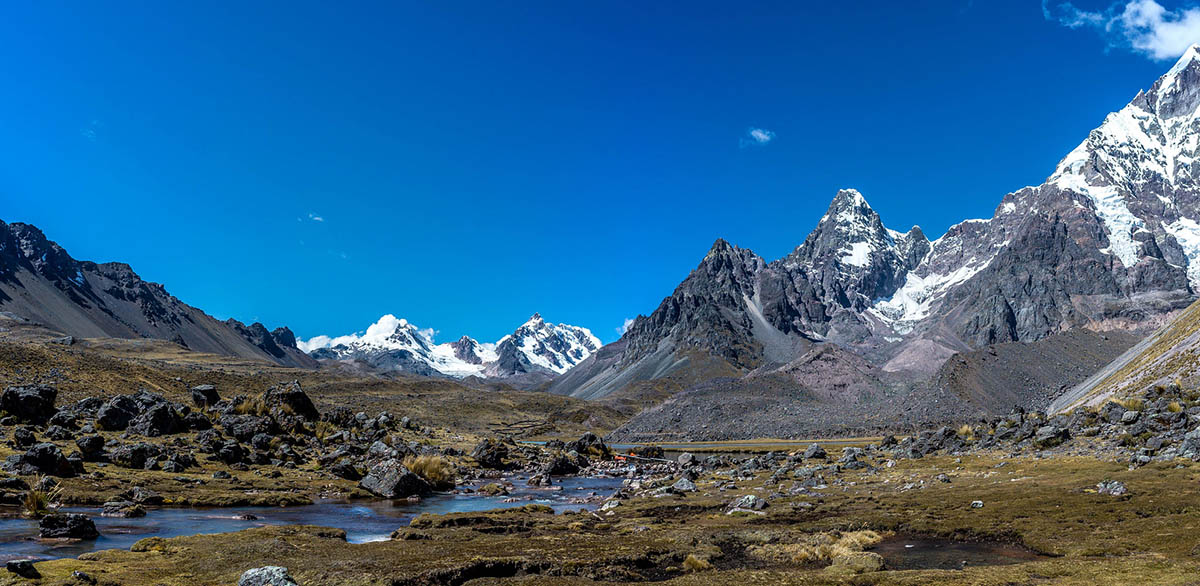
There are two distinct seasons, the dry season from June to August, and the rainy season from November to March. During the dry season it is very hot and sunny during the day. However, temperatures decrease rapidly after sunset and can drop to below freezing at night.
The rainy season coincides with summer in the Southern Hemisphere. Therefore, nighttime temperatures are slightly warmer, though it can still get quite chilly. Rain comes in hard and heavy burts, often several times a day. This also makes the valleys much greener than during the dry season.
The remaining months form the shoulder season, which is mostly dry, but with a few afternoon showers. Despite these general patterns, the weather in the Andes is unpredictable. It can be rainy or sunny on any day of the year, and thus it is always best to be prepared.
Dry Season – June to August
Should Season – April to May & September to October
Rainy Season – November to March
Most travelers choose to trek during the dry season, from June to August. During these months you can expect sunny, yet cool days and very cold nights. The ideal weather conditions attract hordes of visitors to Cusco. Yet, even during the busy season, Ausangate remains much less crowded than the other treks in the region.
Hiking in the shoulder season, from April to May and September to October, is a good option. Crowds and prices fall, yet the weather remains pleasant. Most days are generally sunny with a few light showers in the afternoon.
Few travelers decide to trek during the rainy season. From November to March It can often rain heavily for hours at a time. For those who don’t mind getting wet, temperatures are slightly warmer at night and crowds are almost non-existent.
Trekking in February is not recommended because excessive rainfall can create bad hiking conditions on the trails. This can even lead to potentially dangerous mudslides. Peruvian authorities often close the trails and carry out maintenance on them.
Altitude sickness is a common health concern for Andean trekkers, and for good reason. The average elevation of the Ausangate trek is very high at 3,123 ft (4,000 m). This means it is something to take seriously before setting off on your hike. Read more to find out what altitude sickness is, what are the most common symptoms, and how to prevent it.
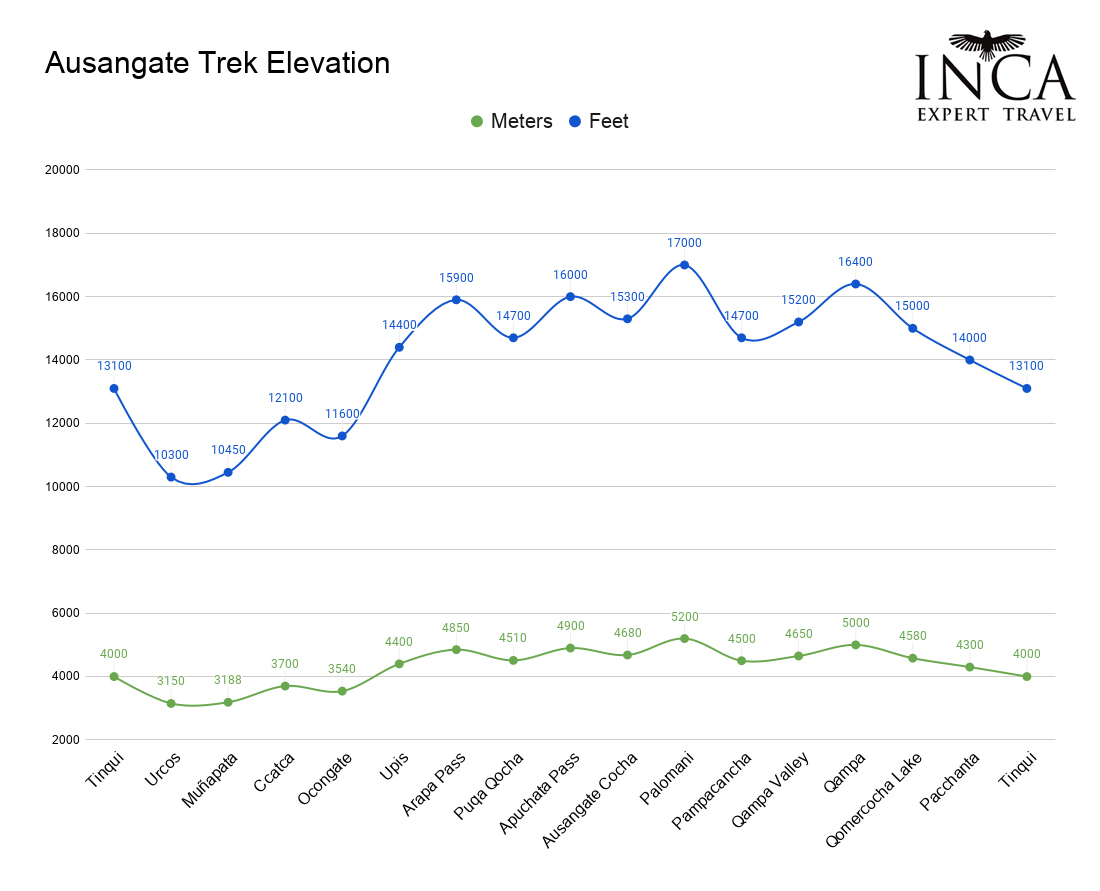
When moving to high altitude in a short period of time, your body may react to the lower level of oxygen in the air. This could result in a few mild, yet unpleasant symptoms for the first couple days. Over time, the body is able to adjust and these symptoms fade. The time it takes varies from person to person, but in general it’s around 2 days. In extreme cases, a more serious condition can develop and medical attention is required.
Mild symptoms of altitude sickness are similar to a hangover and include:
If you experience any of these more serious symptoms seek medical assistance:
The weather in the Andes can be unpredictable. Bringing the right clothing and gear will prepare you for any weather conditions you might encounter. Some electronics will be useful to document your trip, while others are best left at home, or at your Cusco hotel. In case of injury, it’s always essential to bring a well-equipped first aid kit. Read the suggested packing list below to get an idea of what to take with you on the Ausangate trek.
This 5-day itinerary covers the most common route used by trekking companies. Follow this day-by-day description to get an idea of the distances covered, and sites visited each day. Keep in mind that there are several different versions Ausangate trek. Thus, you can consult with your trekking company if you would like to make any modifications.
The itinerary below does not cover the Rainbow Mountain visit. See the note on Day 2 explaining how to incorporate an extra day to visit the colorful mountain.
Start your day early, driving along the highway south of Cusco. Observe the breathtaking scenery of the Andes with a panoramic view of the imperial city below. Once you enter the town of Tinqui, start the first part of your trek. Pass through traditional Andean villages, until you reach the first campsite at Upis. The campsite is located next to thermal hot springs, which are used for medicinal purposes.
Follow the trail until you reach Arapa Pass – 15,900 ft (4,850 m) – the first of four mountain passes. Once you reach the top, behold a spectacular view of Apu Ausangate. Descend from the peak until you arrive at the turquoise Puqa Q’ocha lagoon. Begin your second ascent to Apuchata Pass, located at 16,000 feet (4900 m). This path is surrounded by native vegetation and covered with rocks, moss, and lichen. At the top, enjoy more panoramic views of Ausangate and the snowy peaks that surround it. Eventually, you will arrive at Lake Ausangate Q’ocha. This is a gorgeous, turquoise lake named after the snowy peak and the source of its water.
Note: If you want to add a visit to Rainbow Mountain, you will require an extra day here. In the morning, hike to the Rainbow Mountain and then end the day back at Lake Ausangate.
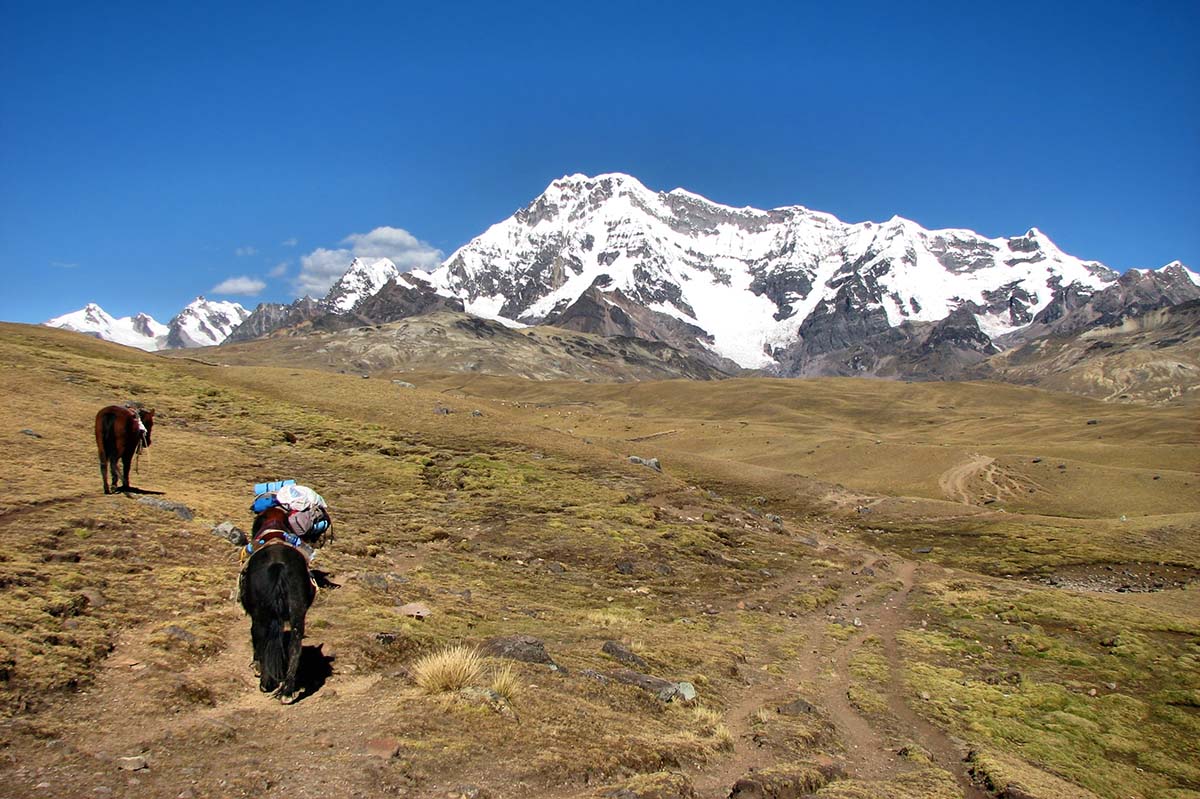
Climb the third, and highest, point of the trek – Palomani at 17,000 ft (5200 m). Then, head downhill again into Pampacancha and the Qampa Valley. This lush valley is home to wildlife, such as condors, chinchillas, and herds of vicunas. Set up camp here for the night.
Marvel at the giant glaciers and huge ice blocks that are part of the snow capped Qolque Cruz Mountain. Continue until you reach the Ticllacocha Lagoon and then cross Qampa Pass at 16,400 ft (5,000 m). This is the fourth and final pass, which is covered in small stone towers called “apachetas” in Quechua. At the top, make your own stone tower as a way of asking the mountain for good luck. On your descent you will pass by Lake Qomercocha, known as the “Green Lake“. Andean priests have long believed that this lake has a very special energy. Finally, arrive at Pacchanta, a small Andean town that is home to hot springs. An evening bath in the relaxing waters is a must after your arduous trek!
Continue for about 3 hours until you arrive back at Tinqui. From there, board the bus or van that will take you back to Cusco.
When hiking the Ausangate trek, following certain guidelines will help you stay safe. Choosing the right time to visit is important to avoid torrential rain and mudslides. Adjust to the altitude before you trek and stay hydrated to prevent altitude sickness. Purchasing travel insurance will help you in case something goes wrong. Read the trekking tips below for more details on safety and other useful information to help you plan your trip.
Excessive rain from December to February can erode the trail and even create mudslides. Not only is it unpleasant to hike in these conditions, but it can also be dangerous. If hiking during the rainy season, listen to any updates from the Peruvian authorities regarding the conditions on the trek.
Spend at least 2-3 days in Cusco or the Sacred Valley before embarking on the trek. You will enjoy the trek more once your body has had time to acclimatize. If you feel yourself getting symptoms of altitude sickness, take a break and don’t push yourself too hard.
When traveling independently, keep an itinerary of your trip at home with family and friends. There is no phone reception on the Ausangate Trek, making it impossible to communicate in an emergency. Informing others of your plans will allow them to seek assistance if they haven’t heard from you.
Most locals in these remote Andean villages do not speak English. Knowing at least a few basic phrases, or having a dictionary handy, can help you communicate if necessary.
If hiking through a reputable travel agency your trekking company will be able to provide you with water. If hiking on your own, be sure to use water purifying tablets before drinking water from natural sources. Staying hydrated is especially important in order to prevent symptoms of altitude sickness.
As with any outdoor adventurous activity, the Ausangate trek can be unpredictable. Cancellations due to weather, mudslides, etc. may occur. There is also risk of injury or illness. For peace of mind, invest in a comprehensive travel insurance plan that will cover you during your entire trip.
Lima is the nation’s bustling capital and travel hub, where all but a few international flights land. From there you need to connect to a domestic flight to Cusco There are many flights per day and the journey only takes about 1 hour. Several airlines fly this route, including some low-cost options. However, the most reliable option is LATAM.
Cusco is the base for most popular treks in the region. From here, arrange the Ausangate trek with a reputable travel agency, which will take care of all logistic details. Your guide will meet you at your hotel and take you to the trailhead. At the end of the trail you will be dropped off back at your hotel.
If you prefer to trek independently, make your own way to the small village of Tinqui. It is located about 100 km from Cusco. You can either arrange your own private transportation or take a public bus. Buses leave from Terminal Paradero Livitaca and the journey takes about 2.5 hours. From Tinqui, follow the signs until you arrive at the trailhead.
You will need to arrange accommodation in Cusco for before and after your trek. There is a wide variety of hotels available, ranging from cozy, family-owned inns, to luxurious 5-star resorts. While there are options that fit every budget, it may be worth splurging on your hotel. After such an adventurous trek, arriving somewhere comfortable for some well-deserved rest will certainly feel worth it.
If you would like to visit the Rainbow Mountain, be sure to plan ahead. When organizing your trek with a travel agency, let them know in advance. Not all trekking companies include it in their itinerary by default. The dry season is the best time to see the vivid colors on the mountain as pictured in photos. During the rainy season, it can often be covered in snow, leaving travelers disappointed. Unlike the rest of the Ausangate trek, Rainbow Mountain is very popular with tourists so be prepared for large crowds.
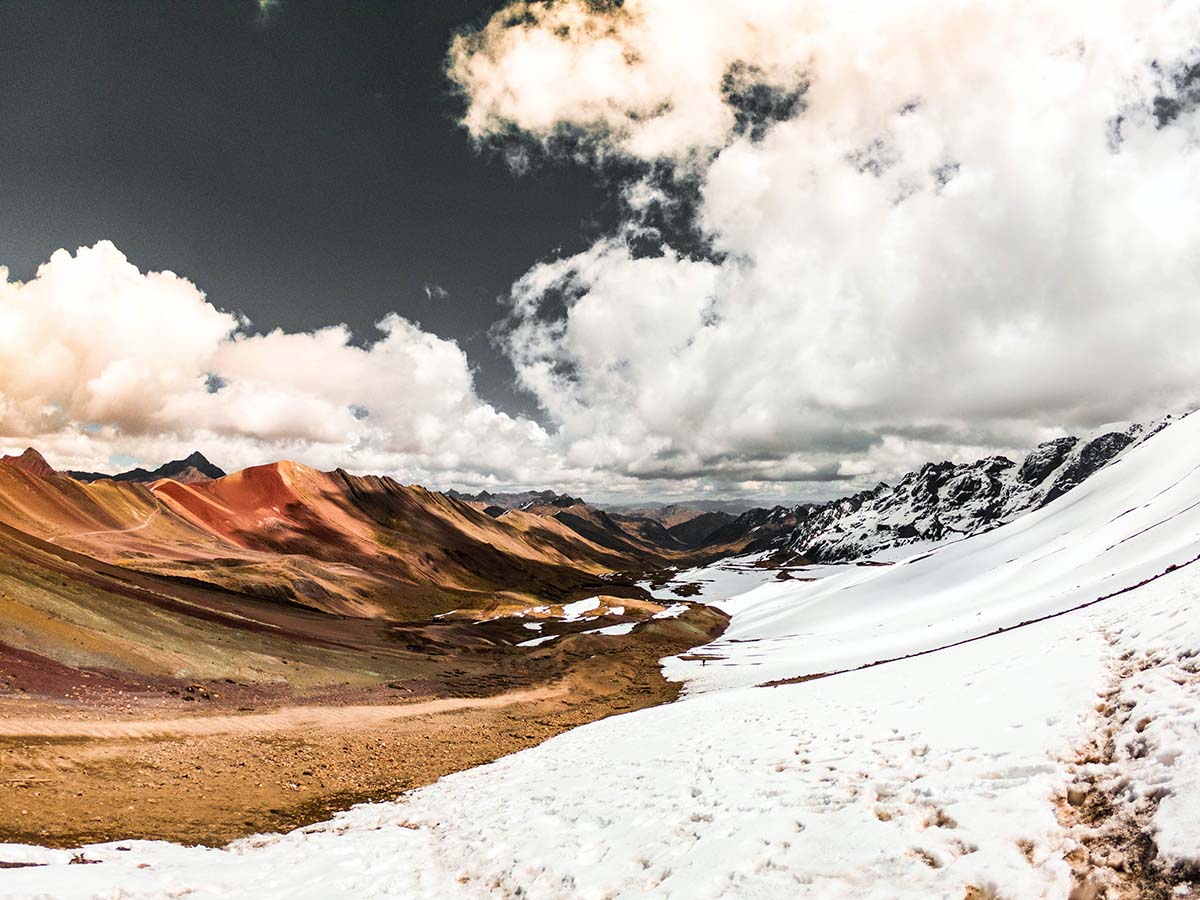
Hiking the Ausangate trek is an incredible adventure, best suited for those who already have experience hiking at high altitude. It’s essential to be well prepared for the high altitude, and remoteness of this trek. Hiking with a professional guide, organized through a reputable travel agency can make the experience much safer and more enjoyable. If you are up to the challenge, it’s sure to be an unforgettable journey.
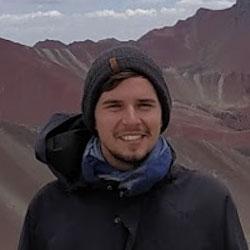
Passionate global traveler, Mikey, born in Prague to Czech-US parents, explored Latin America, taught in Salvador, studied in the UK, and calls Peru home.
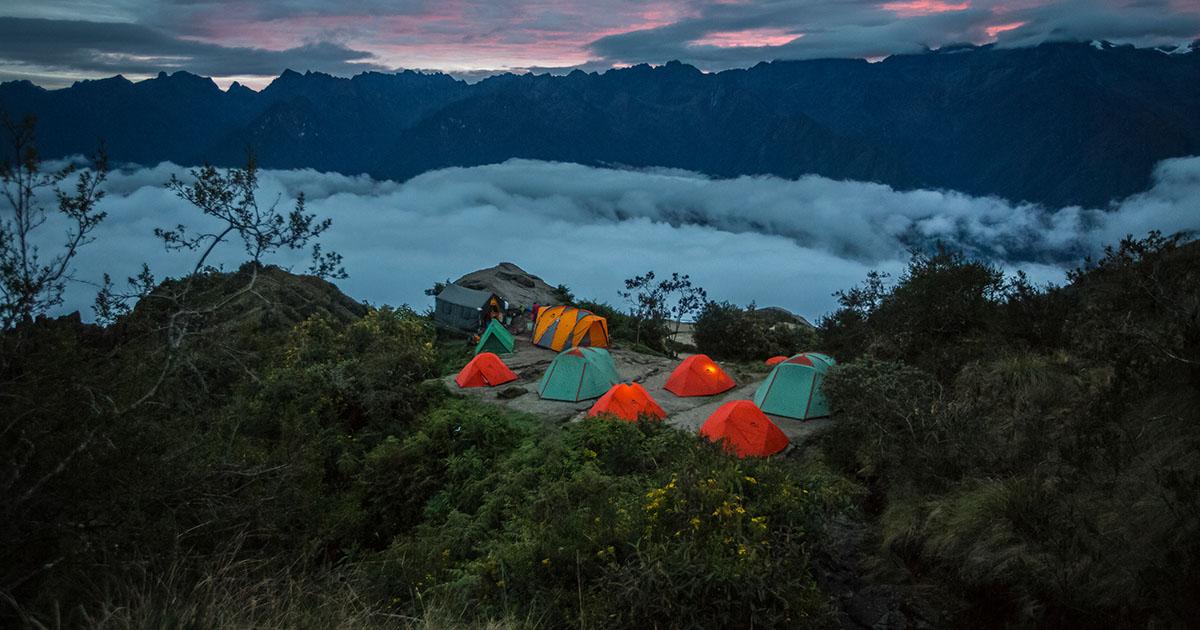
Peru has so many incredible hiking trails that it’s difficult to narrow the best treks in Peru to just ten. No matter where you are hiking in the Andes Mountains, it is sure to be rewarding. From the deepest canyons to Inca trails and the Cordillera Blanca. Azure lakes, mountain vistas, Inca ruins and remote Andean villages are sure to amaze. Here are the top ten multi-day Peru hikes.
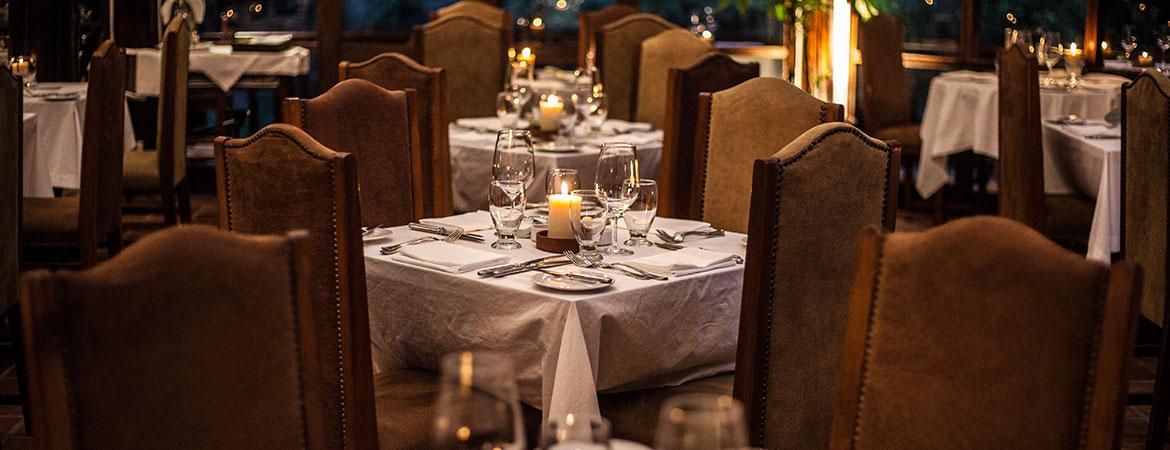
Peru and food. It is increasingly difficult to speak of one without the other. Some would argue that the truest conduit to Peru’s modern heart and soul is through its culinary landscape.